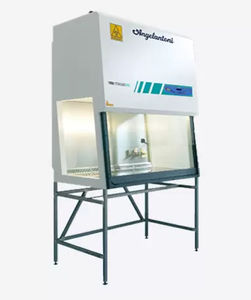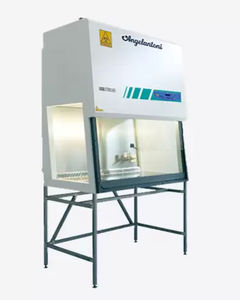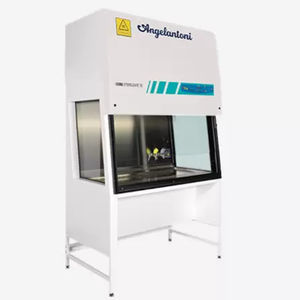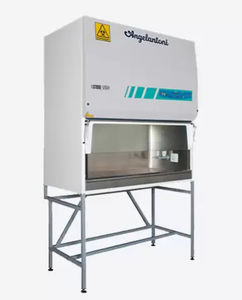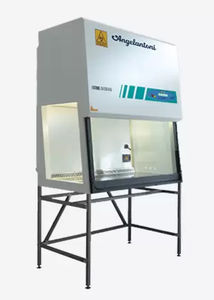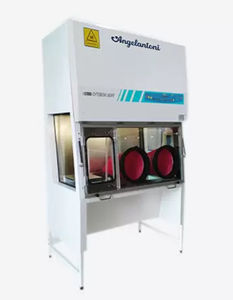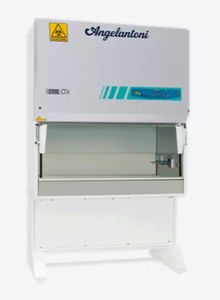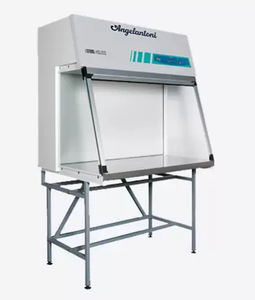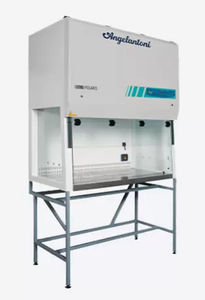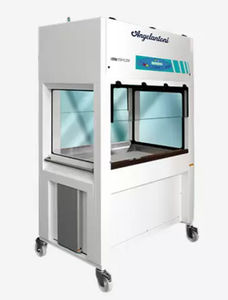
- Laboratory
- Laboratory infrastructure
- Class III isolator
- Angelantoni Life Science

- Products
- Catalogs
- News & Trends
- Exhibitions
Class III isolator Cytoboxtransferfloor-standingwith HEPA filter
Add to favorites
Compare this product
Characteristics
- Class
- class III
- Applications
- transfer
- Configuration
- floor-standing
- Other characteristics
- with HEPA filter, negative pressure, laminar flow
- External width
2,670 mm
(105.12 in)- External depth
880 mm
(34.65 in)- External height
1,950 mm
(76.77 in)- Internal width
1,192 mm, 1,497 mm, 1,802 mm
(46.93 in, 58.94 in, 70.94 in)- Internal depth
580 mm
(22.83 in)- Internal height
740 mm
(29.13 in)
Description
CYTOBOX cytotoxic isolators are negative pressure glove boxes with 2 transfer pass boxes. They are used to separate a pharmaceutical process or activity from both the operator and the surrounding environment in the case of reconstituting freeze-dried drugs and handling toxic materials. Designed for the safe preparation and handling of hazardous substances such as cytotoxic drugs and safe handling of antineoplastic chemotherapy drugs and CMR substances.
CYTOBOX is a Class 3 negative pressure isolator according to ISO/FDIS 14644-7 with a measured leakage level of 16 Pa/minute and a Class 3 unidirectional flow according to ISO 14644-1 or EC GMP Grade A, for isolating the operator and environment from the process and its constituent parts.
All the air is made to pass through a HEPA filter fitted under the work surface, to keep the working area clean and free from contaminants.
Fresh air is sucked from the top of the pass boxes through an H14 HEPA / ULPA filter and pushed into the working area of the pass boxes. Then air passing through a second HEPA / ULPA H14 filter is drawn in by the main fan.
The pressurized air pushed into the plenum passes through the HEPA / ULPA LAF H14 filter and then downwards, in a laminar flow, into the work chamber to protect the products being handled. From here, the air is sucked into the main HEPA / ULPA H14 filter underneath the working surface, and then the air passes through the channel at the rear of the working chamber.
Part of the air is expelled through the exhaust HEPA H14 filter; this process creates a negative pressure condition in the working area to protect the operator and the environment.
Related Searches
- Upright refrigerator
- 1-door refrigerator
- Laboratory freezer
- Laboratory refrigerator
- 1-door freezer
- Refrigerator with glass door
- Laboratory fume extractor
- Climatic test cell
- 2-door refrigerator
- Temperature test cell
- Stainless steel freezer
- Humidity test cell
- Biological safety cabinet
- Laboratory biological safety cabinet
- 1-door test cell
- Laboratory test cell
- Benchtop hood
- Box freezer
- Class II biological safety cabinet
- Chemical fume hood
*Prices are pre-tax. They exclude delivery charges and customs duties and do not include additional charges for installation or activation options. Prices are indicative only and may vary by country, with changes to the cost of raw materials and exchange rates.

